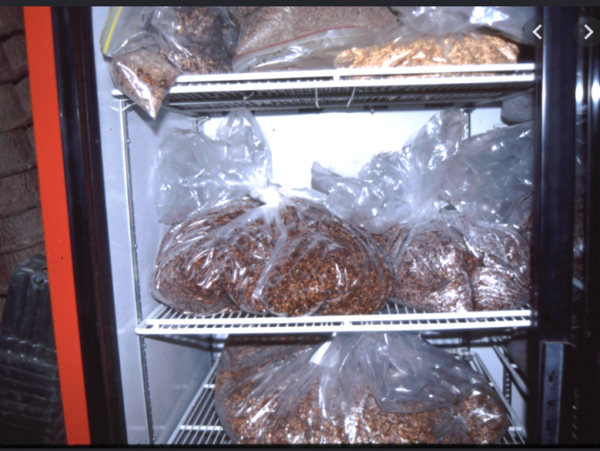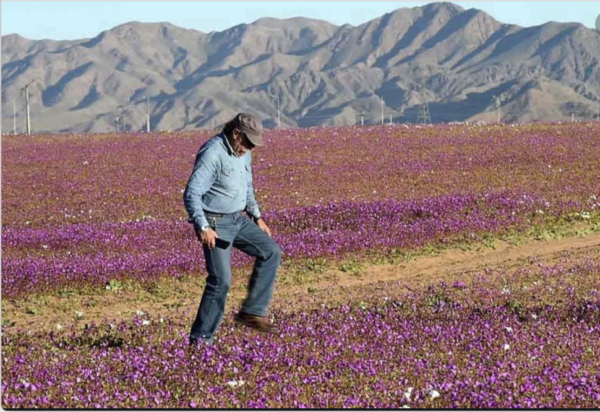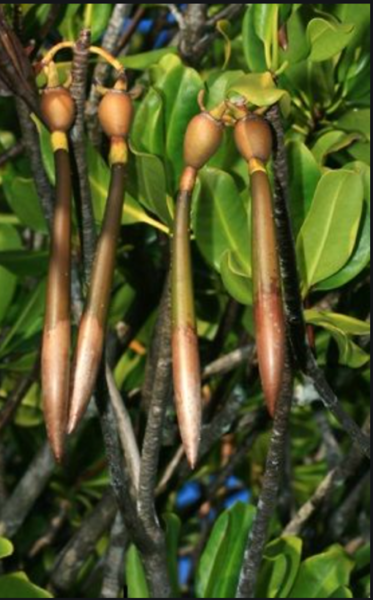Dr. Lew Feldman, Garden Director
In a previous IGYA: The Seed, we spoke of the seed being a most remarkable structure, comprised as it is of the embryo, nutrition to support the newly germinated seedling and often modifications to facilitate seed dispersal. Once dispersed, the seed is ready for germination; or is it? Getting seeds to germinate, as many a gardener knows, is not as straight-forward nor as easy as one might first believe. Sometimes, for successful germination, the seed must first be pre-treated in some way, which usually involves exposing seeds to a certain type of environment. An appreciation of what happens, physiologically, to the seed when subjected to specific environments is key to understanding the germination process and its controls.
For our discussion, we begin by recognizing that once the seed germinates, that the new plant is fixed in its environment. If growth conditions are not suitable, that plant cannot move to a new area. Thus, nature has built into the physiology of seeds mechanisms for measuring, for “judging”, whether the environment in which a seed finds itself is favorable for germination, and more importantly, for seedling establishment. Let’s consider some typical situations which seeds experience.
In most of the US, seeds usually mature in late summer or early Fall. But germination in late Fall turns out to be risky, for in many parts of the US the arrival of winter cold would likely damage or kill a recently-germinated seedling. So how does the seed “know” not to germinate? And, as importantly, how does it “know” when it is safe to germinate? The answer comes from an understanding that the seed is able to measure the length of the period of winter cold. Depending on where one lives, a typical winter generally has an average number of hours of cold, during which temperatures consistently fall below a particular maximum. The seed is able to count the number of hours of cold below this maximum and only after a genetically-predetermined number of hours of cold has been reached, is the seed able to germinate.

Seeds being cold-treated (stratified) in a refrigerator.
(Environmental Horticulture, Univ. of Florida)
So how does the seed measure the length of the cold period? In many seeds, as they mature, they accumulate compounds in the outer covering of the seed, the seed coat, that act as inhibitors to germination. In these circumstances the seed can only germinate after the inhibitors have been removed, or inactivated. How does this happen? The answer is that cold destroys or inactivates the inhibitors of germination; and only after a sufficiently long enough period of cold are the levels of inhibitors reduced enough to allow germination to occur. As many gardeners know, prior to planting some seeds, the seeds need to be cold-treated by placing them in a refrigerator; in this way duplicating the period of cold that seeds naturally experience. Artificially treating seeds with cold is known as stratification and is a common horticultural practice for those of us living in environments where the winter cold is not sufficient to naturally reduce the levels of inhibitors of germination.
While exposure to cold influences when it is the right time to germinate in environments with marked seasonality, there are some environments, such as in the deserts of southern California, in which there are only short or no periods of cold. In these environments the limiting factor for seedling establishment is not cold, but rather the availability of adequate moisture, which usually comes in the form of infrequent torrential rains. In this circumstance, rather than measuring a period of cold, the mechanism regulating seed germination involves the seed determining whether there is adequate moisture to sustain successful seedling establishment. Interestingly, while the environmental inputs (cold or moisture) measured by the seeds are different, the effect is the same; namely, the lowering of the levels of germination inhibitors in the seed coat. In the desert, a rain of sufficient amount to sustain seedling establishment is adequate enough to wash away (leech out) inhibitors of germination. Some seeds will germinate best only with adequate moisture and a period of cold.

World’s driest desert (the Atacama, in northern Chile) in bloom following a torrential rain (Youtube)
While both temperature and moisture availability are the most typical factors influencing seed germination, there can sometimes be a third environmental parameter, light, which initiates the germination process. In many places, especially in New England, ants harvest seeds and take them underground, deep into their burrows.

Ants harvesting seeds and transporting to their underground burrows
(Science News, Alex Wild)

Road cut exposing deeply buried seeds to light
(Travis Pribusauskas)
In such an environment, lacking light for photosynthesis, a germinated seedling would surely die. But exposing these seeds to light, as frequently happens when a newly constructed road exposes the inside of a hill, or when the soil is disturbed or plowed, stimulates germination.

Sprouted (viviparous) seedlings of red mangrove (Pinterest)
Returning to the more common situation of seeds requiring a particular environmental input to germinate, in many cases it is possible to bypass this requirement. Understanding how to short circuit the germination process came from research which showed that the germination process in many seeds involved the production of a naturally occurring chemical known as gibberellic acid, or GA. This discovery allows gardeners to germinate, at any time, seeds for which they may not know the exact environmental requirements for germination. Treating the seeds with GA essentially substitutes for the specific, external environmental signal.
Finally, there are some seeds which are so “anxious” to germinate that they begin the process before they detach from the parent, as found in some species of mangrove. Seeds showing this type of precocious germination are said to be viviparous.
The Botanical Garden receives wild-collected seeds from all over the world, usually without any information about germination requirements. Sometimes these species are unknown in horticulture or agriculture by which we might otherwise learn how to best germinate them. We are able to use gibberellic acid to short circuit the environmental cues missing in our nursery environment.
